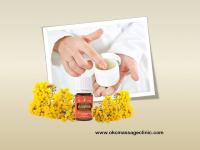October 2, 2023
Diabetes mellitus (DM) represents a group of chronic, metabolic diseases, with the main feature of chronic hyperglycemia caused by defects in insulin secretion, insulin efficacy, or, most often, both. According to International Diabetes Federation, DM, as the largest global epidemic of the twenty-first century, affects more than 420 million individuals with constantly increasing prevalence. DM is associated with a high risk of developing serious micro- and macrovascular complications. One of the most serious complications is impaired wound healing, which often leads to the development of chronic wounds and amputations. Wound healing is delayed due to disturbance in each phase of wound healing, i.e., the hemostasis, inflammation, proliferation, and remodeling phases. The altered inflammatory response, decreased collagen content, and oxidative stress also significantly contribute to poor wound healing in patients with DM. Diabetes foot ulcers and a high risk of amputation and mortality can impact patients’ quality of life, life roles, and body image, as well as the financial burden placed on patients and their families. Therefore, proper wound management is crucial for reducing morbidity and improving quality of life. Nowadays, there are many synthetic drugs used for wound treatment; however, their application is associated with the occurrence of allergies, irritations, and other skin complications. Therefore, herbal products have been in the focus of scientific research in recent years due to their great potential efficacy and better safety profile. As proper wound management is crucial to reducing morbidity and improving quality of life, this study evaluated for the first time the wound healing potential of Helichrysum essential oil prepared in the form of ointment and gel.
Helichrysum. italicum is a typical Mediterranean plant belonging to the Asteraceae family, called immortelle, curry plant or sandy everlasting because of bright yellow-colored inflorescences that do not wither. It possesses a wide range of biological activities, such as antimicrobial, anti-inflammatory and antioxidant properties and traditional use is related to respiratory, digestive and skin inflammatory conditions. The important role of H. italicum is reflected in the use of its essential oil in the perfume industry and aromatherapy. In traditional medicine it is widely used in the treatment of wounds and skin conditions such as hematoma and scars. The wound healing potential may be due to the presence of terpenes with confirmed astringent and antimicrobial potential, which help to improve wound contraction and facilitate epithelialization. One of the most abundant components in helichrysum essential oil, α-pinen, also promotes the wound healing process by accelerating wound closure, generating scars with effective tensile strength, and contributing to collagen deposition. According to histopathological analysis, the topical formulations of helicrysum essential oil were beneficial in wound therapy. Topical application of the formulation based on helichrysum essential oil led to restoration of cellular structure of the dermis, especially in gel group with only the underlying muscle defect indicating the incision site. Therefore, the essential oil can be administered incorporated into either a gel or an ointment, as both are effective at promoting healing.
The ointment was prepared by mixing 0.5 g helichrysum essential oil with Eucerin ointment base until a blended sample was obtained. The 0.5% w/w gel of essential oil was prepared by incorporating 0.5 g oil into a 99.5 g carbomer mucilage gel. The choice of 0.5% as a concentration of essential oil in gel and ointment was based on literature data and relevant recommendations. Studies suggest that a dose of 0.5% appears to be suitable for topical application, while increasing the dose is not recommended due to the potential for skin irritation. The results of the present study verify the fact that gel and ointment prepared from H. italicum essential oil could be a topical herbal remedy for improved healing wounds in diabetic subjects.
In my experience helichrysum is fantastic for wound healing and you don't need to use very much of it to be effective, particularly when combined with other wound healing oils like copaiba, chamomile, frankincense, myrrh, and lavender.
https://pubmed.ncbi.nlm.nih.gov/34451910/

